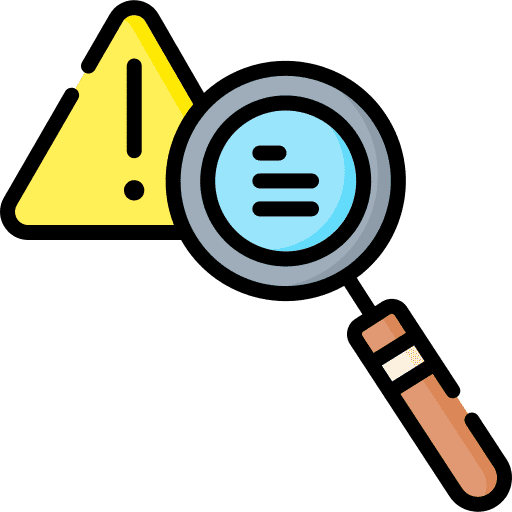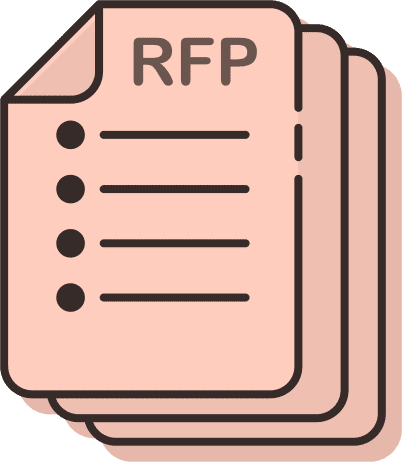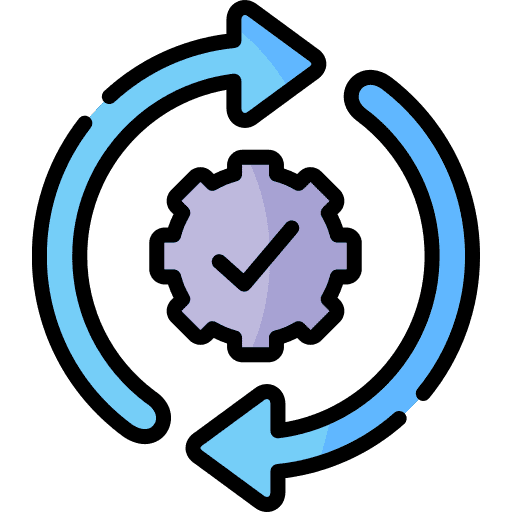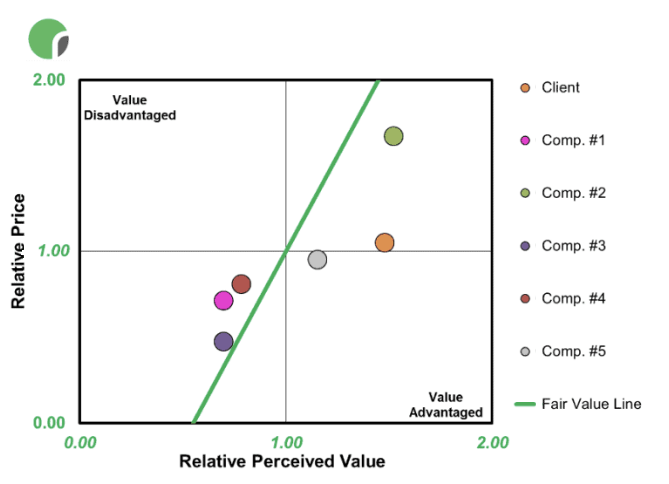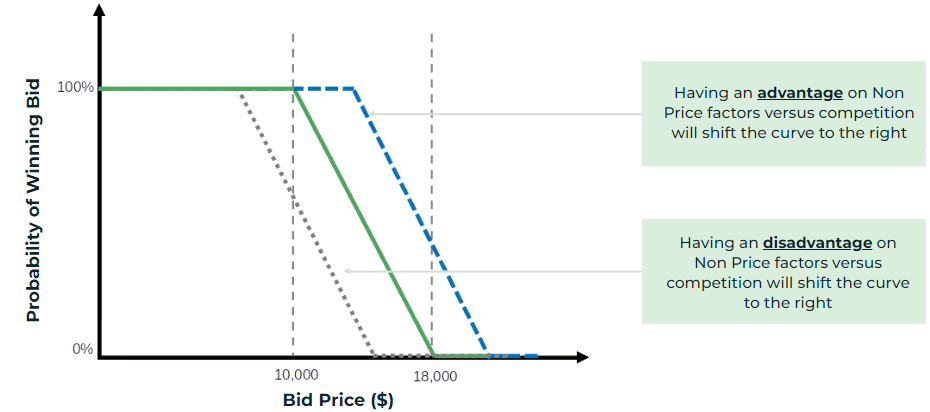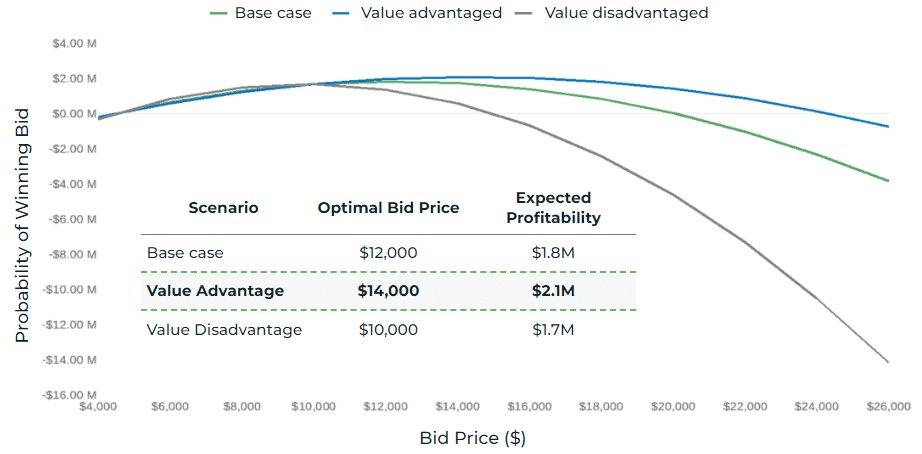Bids are a matter of life and death for B2B firms. Companies rely on the completion of bids and proposals to generate a significant portion of their sales; whether or not certain deals are successfully closed can mean the difference between meeting company goals or falling short thereof. Additionally, as more companies are becoming further adept at professionalizing procurement, B2B firms are losing margin and being undercut in the process. Winning B2B bids is becoming more and more challenging, and firms that do win bids are forced to make serious concessions that eat into their margins.
The process by which firms solicit bids for the completion of important projects begins with a document called an RFP, or request for proposal. Understanding what RFPs are, how they work, and why they’re necessary is important for B2B firms looking to make more successful bids and win more profitable business. Learning about the nature of RFPs and identifying best practices are the first steps toward making the bidding process work for B2B firms, not against them.
In this article we analyze the RFP process first from the perspective of the business issuing the RFP, and then from perspective of vendors trying to win the RFP. The following topics are covered:
What is an RFP?
A request for proposal (RFP) is a business document that announces a project, describes what it entails, and solicits bids from contractors who are qualified and able to complete it in a timely fashion. Most companies prefer to launch projects and find contractors using RFPs, and many governments rely on them exclusively.
When Are RFPs Needed?
Not every project requires an RFP. There’s no need to issue an RFP if the organization in question has the talent, equipment, and resources necessary to complete a project in-house, for instance. RFPs are most useful in situations like:
Project Has Significant Impact to the Business
While RFPs can be used for any number of different projects, companies typically use them for projects that are strategically important, highly valuable, or highly impactful to the business. The use of RFPs is becoming standard practice for many businesses. Procurement is frequently done via RFP as a way to ensure the firm receives the most value from their purchase as possible at the lowest price they can find.
Project is Highly Technical and Requires Expertise
It is often more efficient for businesses to use RFPs to solicit qualified contractors than it would be to develop the necessary expertise in-house. The same is often true for businesses that lack the resources or productive capacity to add a new project to their workload. Sometimes completing the project requires research and development that can only be conducted using equipment and personnel that the bid-seeking firm doesn’t have access to. Whatever the case, using RFPs with specific questions and requirements is frequently the most effective way to tap into the focused pool of expertise that firms need to complete their projects.
Finding the Best Solution at the Best Price
The RFP process is designed to be as fair and free of personal bias as possible. The process opens up the field to any and all interested vendors who would like to submit proposals, thereby promoting fair competition. Vendors are not allowed to access any information beyond what is provided in the initial RFP and any subsequent clarifications.
Furthermore, all vendors are judged on exactly the same criteria to reduce the chance of unfair treatment, and many companies even use evaluation committees to judge each proposal to further reduce the role of bias in the company’s final selection. Additionally, these measures also help ensure the company receives the best price possible. More competition means less chance for collusion and more incentive to compete based on price.
Breakdown of the RFP Process
Every RFP is different, and every project requires a unique approach. That said, the average RFP process can be broken down into a series of general steps.
1. RFP Business Needs Identification
The RFP process starts by identifying a problem and creating a problem statement. Once the problem is identified and the stakeholders agree that a project is needed to address it, they come together to determine what the goals of the project will be. The project’s scope is then defined, a list of needs versus nice-to-haves is assembled, and market research is conducted. This information is then used to construct a list of vendor requirements. Once these plans are agreed upon, the stakeholders establish a budget for the project and move to the next step.
2. RFP Creation
The next step in the RFP process is the drafting of the RFP itself. This step is critical, as a poorly drafted RFP may not accurately describe the problems that need addressing or risk not giving vendors enough information about what solution they should be proposing. The amount of time required to complete this step may vary depending on the complexity of the project. All needs, wants, and requirements decided in the previous step are formalized and written into the RFP draft.
Drafting the RFP
RFPs generally need to include a set of facts and criteria to help potential vendors understand the nature of the problem and what kind of solutions the company is looking for.
Drafting the RFP facts and criteria include but are not limited to:
| Facts/Criteria | Notes |
|---|---|
| Project Overview | A summary of the project, the company’s needs, and what kind of solutions they have in mind |
| Company Background | An overview of the company issuing the RFP that includes basic background information and an explanation of what the company does |
| Project Goals | A more in-depth breakdown of what the company hopes the winning vendor will accomplish |
| Requirements / Scope | Lists of what the company wants or needs to achieve or acquire. Includes both necessary items and nice-to-haves |
| Budget | The amount the company is willing to spend on the project |
| RFP Timeline | The time frame in which the company will accept proposals |
| Submission Requirements | Criteria for proposal format, length, content, and delivery method |
| Evaluation Criteria | The set of criteria by which vendors’ proposals will be scored |
| RFP Questions | What information and data will help you make your decision? |
Who’s Responsible for Creating the RFP?
The people responsible for creating the RFP varies from company to company. Some companies rely on executives to work with department heads to develop the RFPs. Other companies have dedicated RFP managers whose main or only duties are the creation of RFPs. If the RFP relates to specialized services its a best practice to involve the key internal stakeholders in crafting the RFP to ensure needs are properly stated.
Establishing RFP Requirements
Although varying business needs mean that no two RFPs are exactly the same, they all include a set of requirements for any interested vendors. The specific requirements differ from RFP to RFP, but they broadly include at least these main groups:
Minimum Requirements
Also called critical requirements, these are typically a set of stipulations that are essential to the success of the project. Since meeting these requirements is absolutely necessary for the project to succeed, vendors who are unable to meet them are discouraged from submitting proposals.
RFP Evaluation Criteria
Evaluation criteria are a set of objective standards used to score vendor proposals. These criteria are usually given to both internal stakeholders and included in the RFP itself. The use of objective scoring criteria helps eliminate personal bias/subjectivity from the scoring process, and giving vendors the criteria before they submit proposals helps prevent the submission of low-quality or inadequate proposals.
Submission Requirements
These requirements tell vendors how their proposals should be submitted and what they should look like. Submission requirements may include things like whether proposals must be submitted as physical documents or sent electronically, how the document should be formatted, the minimum or maximum number of pages, how the information should be structured, and so on. Requiring vendors to follow submission requirements can help weed out vendors that don’t follow directions or pay attention to detail, and standard lengths and formats can make it easier to evaluate the proposals.
3. RFP Issuance and Collection
This is both the longest and simplest step in the RFP process, with most of the onus being on the competitors of the RFP to prepare a response and/or a proposal within an established time frame.
Select Vendors
The company issuing the RFP should take about a day to narrow down a list of vendors from whom it would like to solicit proposals. More vendors means more proposals to evaluate, so it is recommended to keep the list down to a handful.
Issue the RFP and Answer Questions
Once the RFP has been issued to the selected vendors, the company should make itself available to answer any questions the vendors may have. It is advisable to give the vendors a few days to examine the RFP, evaluate their own capabilities, and get clarification on any questions or unclear items.
Receive Proposals
Once the RFPs are issued and questions are answered, the company must wait for the predetermined submission deadline to make sure it has received proposals from all interested and qualified vendors.
4. Scoring and Evaluating Submissions
Once all the proposals have been submitted, the company spends a few days scoring them based on the evaluation criteria established in step 2. The results are used to select the winning solution and provider.
5. Negotiating with and Contracting Winning Vendor
Once the winner is selected, the company then engages in negotiations to finalize the terms of the contract. RFP presentations can be used as a second round of judging in some situations, which may add another 5 days to the process.
Key Roles and Responsibilities During RFP Process
Effective RFP processes necessitate cooperation by various stakeholders. Involved personnel must work together to identify a need, gather information, and explore possible solutions before even beginning to draft an RFP. The list of necessary participants is fairly long and can include:
Business Stakeholders: The Entity Requesting Bids
These professionals are responsible for evaluating the feasibility of the bids submitted by vendors, the financial health of the bidding companies, and each bidder’s ability to undertake the project. People in these roles are usually very busy with other work, so they only have a limited amount of time, attention, and energy to properly define their needs and evaluate bids. As such, it falls on the consultants to make sure they adequately identify and cater to the business’s needs.
Vendors: RFP Respondents
The vendors are the organizations that are invited to submit proposals for RFPs. Their job is to persuade the buyer that they’re the right choice for the project, which requires the creation of proposals that combine compelling solutions with attractive pricing.
Business Consultants: Experts at Navigating the RFP Process
Business consultants have both the expertise and bandwidth needed to shepherd the business through the RFP process. They start by interviewing the client to identify their exact needs, then use that information and their considerable skills to select qualified vendors, manage lines of communication, and assess results before making a recommendation.
An increasing number of procurement processes are designed to minimize the business consultants’ interaction with the business stakeholders. Business consultants have to take every possible opportunity to fully identify the client’s needs, describe their value, and educate the client on the differences between you and the competition.
Procurement Professionals: Architects Managing the RFP Process
This group is usually made up of procurement managers, strategic sourcing managers, and other procurement-related roles. They are the professionals in charge of vetting the request as well as facilitating the creation, distribution, and evaluation of RFPs. Procurement professionals are also typically responsible for working with vendors throughout the process, which means it falls on them to monitor the vendors’ progress, answer questions, and provide necessary feedback.
Procurement professionals, while highly skilled in their own arenas, often do not fully understand the key needs of the business. They are incentivized to reduce costs above all else, which can sometimes result in tradeoffs that may inadvertently cause adverse impacts to the business. Getting the most out of an RFP process may require educating procurement professionals on the implications of any potential tradeoffs, which may force a discussion with the business stakeholders.
Company Executives: Arbiters of Approval
The company executives are the final gatekeepers between proposal and approval. They are responsible for evaluating costs, calculating the projected return on investment, and ensuring that the proposal is aligned with the goals of their company. Executives are often very solution-driven and highly motivated to find solutions quickly due to the high ROI involved, so it’s important to make sure that comes across when communicating the specifics of your solution.
RFP vs RFI vs RFQ – What’s the Difference?
RFPs aren’t the only kind of business invitations that companies can issue when they need to start a project to solve a problem. The RFP is the most important of the three documents—and covers all the information in the other two documents—but the other two types can be issued on their own.
RFP
RFP stands for request for proposal. An RFP is a formal approach for creating a proposal document to procure goods and services.
RFQ
RFQ stands for request for quote. An RFQ is a document in which the price is requested for interested vendors' services.
RFI
RFI stands for request for information. An RFI indicates that stakeholders are on the verge of buying services and need more information before deciding.
RFQ: Request for Quotation
A request for quotation (RFQ) is a document used by teams who already have a solution in mind for a problem or task they need to tackle. RFQs only include the price of the products or services the company is looking for, so they may be used to inform the company’s pricing strategies or to get a sense of the price range before issuing an RFP.
RFI: Request for Information
A request for information (RFI) is a document that’s primarily used by procurement teams who are trying to identify and understand all the available options for solving a problem or completing some sort of task. They may be employed with the intention of acting on the information in the near future, or they may be used to gather information to build a database of suppliers for future reference. Unlike RFPs, RFIs are nonbinding.
PQQ: Prequalification Questionnaire
PQQs are used to pre-screen potential vendors before issuing RFPs. A well-made PQQ can help filter out unsuitable vendors and shorten the RFP review process. Often the best strategy is to phrase the questions in a yes/no format to quickly eliminate unqualified or underqualified vendors.
RFT: Request for Tender
RFTs fall somewhere between RFPs and RFQs. Most frequently used in the public sector, RFTs are formal invitations for suppliers to submit competitive—and often sealed—bids to supply products or services. Though similar to RFPs, RFTs often contain more detail in their description of the exact work or products the company requires, and they are frequently shared publicly instead of sent to a select group of vendors.
RFA: Request for Applications
RFAs are formal notices that grant funding is available and invites organizations to submit bids on how the money could be used. RFAs differ from RFPs in that they rely exclusively on public funds in the form of grants.
RFS: Request for Solution
RFS’s are frequently used as the first step in the procurement process. An RFS is similar to an RFP, but much more general. Unlike RFPs which ask for proposals to complete a predetermined project using an already identified set of resources, an RFS only asks for proposals for potential solutions to problems. An RFS that successfully identifies solutions to the problem may lead to the issuance of a complete RFP.
How to Win RFPs: Best Practices
Now that we’ve broken down the RFP process from a business stakeholders’ perspective, let’s try to bring it together from a vendor’s perspective and learn to build a winning bid.
Professional procurement, reverse auctions, and online bidding systems are turning salespeople into prisoners with calculators. Constant price competition and lowest-bid-wins projects have driven the modern salesperson away from their natural environment and into the realm of the bean counters like prisoners with calculators. Instead of using their time productively on business development, relationship building, and closing sales, they’re increasingly stuck scrounging around in the weeds looking for ways to minimize the price of their bids.
Sound familiar?
Businesses don’t have the luxury of time to identify and employ intelligent bidding strategies. Every minute they spend puzzling over the theory of the bidding game is a minute they don’t spend making money. The opportunity costs associated with staying out of the arena until they identify a suitable strategy translate to lost business, which may mean the difference between soaring profits and liquidation.
Winning RFPs has become increasingly challenging over time, but it certainly isn’t impossible. Start following these best practices to turn the RFP process to your advantage and win more B2B bids.
1. Start by Addressing Your Customers’ Needs
As trite as it may sound, it’s important to bid for RFPs with an understanding that your customer is looking for a satisfactory product or service at the best possible price. Many organizations enter the RFP bidding process without fully understanding why the bidding RFP was issued in the first place.
Grasping the customer’s motivation for issuing the RFP is key to maximizing your chances of submitting a winning bid. For instance, maybe they:
- Tried to complete project internally and failed
- Need the help of an external company with the proper credentials
- Are undertaking the project to complete their CEO’s objectives
- Have concerns about employee satisfaction
Knowing why the customer is issuing the RFP will help inform how you respond and structure your proposal.
2. Know What Value You Bring to the Table
Many companies enter the RFP process with a vague idea of the value they offer based on historical opportunities and margin targets. It’s hard to price out a bid if you can’t calculate the actual value your company brings to the table, and it’s even harder to calculate potential profits and suitable bid prices without firm numbers.
You can calculate value from two different perspectives:
Perceived Value
This calculation involves understanding how your customers position your price and value versus the competition when bidding for RFPs. Thinking from your customers’ perspectives helps teams predict what decision they’ll make given the other options available.
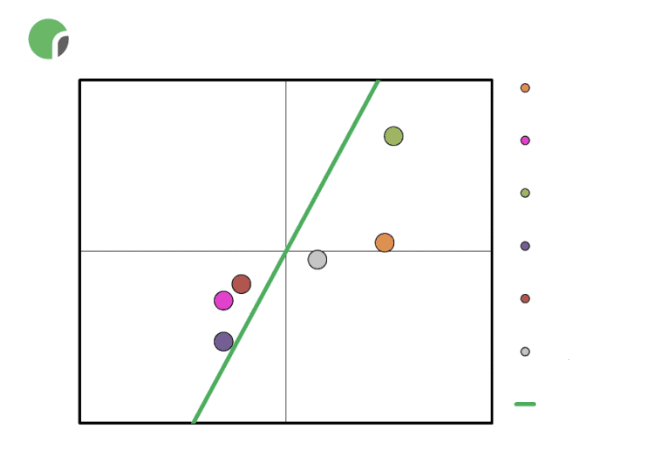
Disadvantaged
Advantaged
How to do a Perceived Value Analysis
The first step in this process is to assess customer price sensitivity to determine the rate at which they’re willing to make tradeoffs between value and price. The resulting line is called the Fair Value Line. Flatter lines indicate lower price sensitivity, while a steep line means the customer is very price sensitive.
The next step is to identify the most important purchase attributes—IE warranty, taste, etc—and score it versus the competition to determine relative perceived value.
Once you have the line and the relative perceived value, the last step in the process is to acquire and input competitive prices for each alternative option your customer has.
Values that fall on the right side of the Fair Value Line are considered value advantaged, and the offer that falls the furthest to right will be the best positioned to deliver the most value for the lowest price. Offers to the left of the line are value disadvantaged and must be price adjusted to become competitive. Even a basic application of this tool can be a big help in determining how to position your bid in competitive RFP pricing.
Financial Value
When customers are motivated more by pure financial metrics than any other factor, it’s usually a better idea to utilize financial measurements to determine how to price your bids appropriately. You’ll have to quantify all the costs and benefits that accrue to a customer who accepts your bid versus the value offered by the competition.
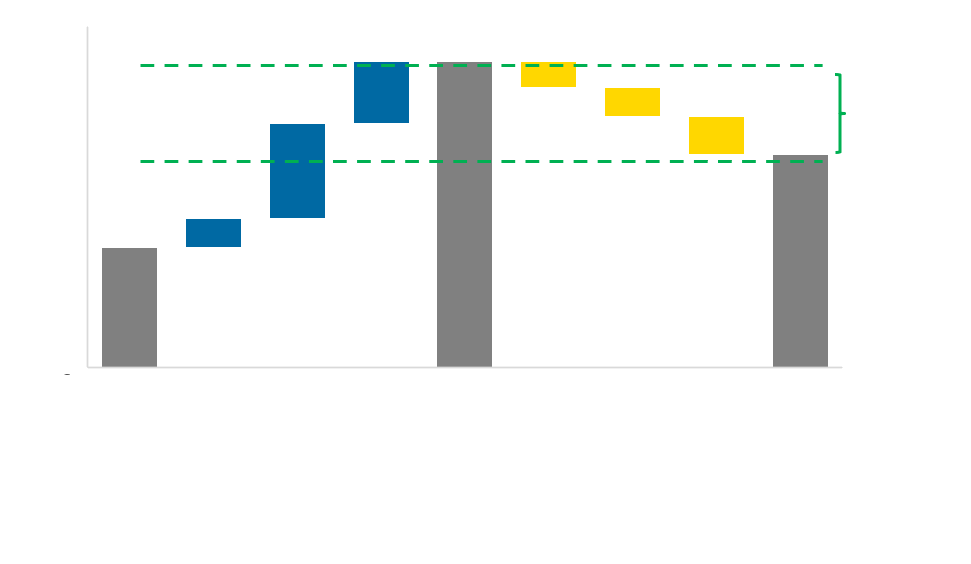
Customer
Value
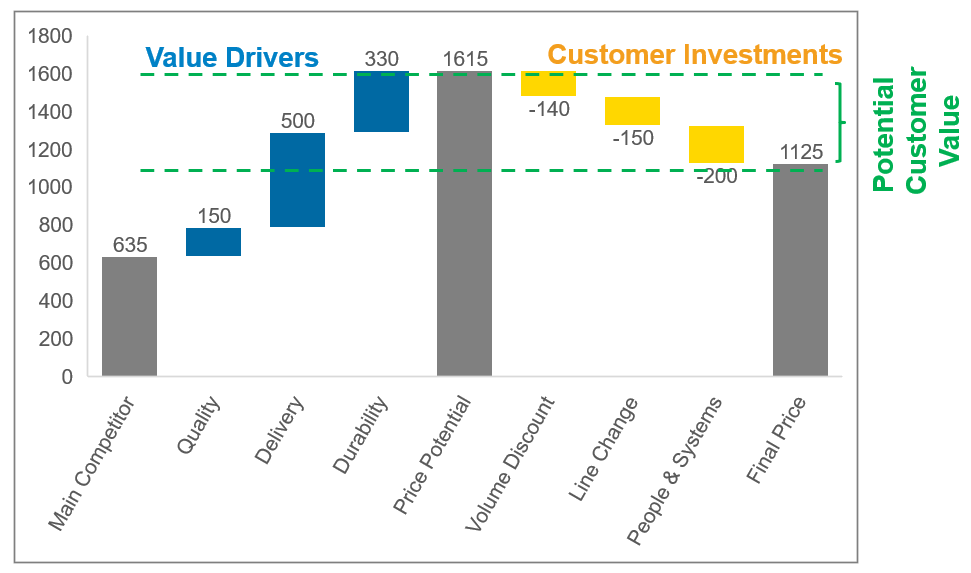
Forming a high-quality RFP response for a customer focused on financial value requires an exhaustive accounting of all aspects of their bid. Client organizations often overlook elements like warranties, payment terms, switching costs, sales support, etc when making their calculations. This has the double negative effect of forgoing their value in the asking price and failing to include explanations of the benefits they bring as further justification of the offer’s value.
How to Measure Financial Value
Financial Value measurement needs to be done from the customers’ perspective, so keep in mind the quantitative tradeoffs associated with size (how big is the benefit), certainty (how likely am I to realize the benefit), and speed (how long will it take to realize). By already accounting for customer considerations/objections, you’ll be better able to substantiate the value you bring to the table.
3. Those Who Forget the Past are Doomed to Repeat It
Improving your bidding skill and sophistication relies heavily on large samples of win/loss data. The more bids you’ve made in the past, the more data you’ll have on important factors like:
- Won or lost
- Bid price
- Competition’s bid prices
- Deal size
- Customer segment
- Other components
Learning from these historical data points is important, but the most important variable is the justification for why your bid was accepted or rejected. Many organizations fail to either follow up with the customer or rely on their sales teams to gather the requisite data. Sales, perhaps unsurprisingly, will frequently cite price as the decision driver. It’s an easy answer to arrive at when you aren’t close enough to the customer and often doesn’t get any resistance apart from asking how low the competition’s bids were priced.
Instead of relying on sales, a better practice is to have another group, internal or external, gather the information on why a B2B bid was won or lost.
When we undertook a task for a building material supplier, for example, they believed 95% of their losses were based on uncompetitive pricing. After reviewing 100 bids with direct customer contact, it was found that pricing actually only affected about 23% of the losses. In fact, most of the gap was driven by potential customers not fully understanding the company’s value offering, not adjusting our bids to the clients specifics needs and competitive gaps on shipping policies. This insight led to a dramatic shift in their bidding process and investment allocation which resulted in a 39% increase to their close percentage.
4. Utilize an Automated Bidding Tool
This is where all the tedium of collecting win/loss bid data starts to pay off. You can use the data to calculate the probability of winning a bid on RFP given a certain price. If your data is rich enough, you can even drill down to calculate bid success probabilities based on some of the following variables:
- Customer segment
- Region
- Competition
- Product mix
How RFP Tools Can Help
A sales team should be able to use a bid pricing tool independently in ideal circumstances. They fill out all the customer’s details, the offer portfolio, and the proposed price. The tool should then calculate a score that lets the salesperson know if they are approved to bid or require approval from the higher-ups to move forward. Putting the tool directly in the sales team’s hands will let them become adept at modifying deal attributes (ideally with the customer) to achieve higher scores without any outside influence. The tool also ensures 100% data capture.
From a corporate standpoint, the RFP tool can be leveraged to:
- Increase or decrease the amount of bids being won
- Set dynamic parameters for margin requirements
- Gain competitive advantage by employing win/loss analysis
- Ensure all bids are being evaluated in a consistent manner
- Evaluate the impact of a range of price and non-price factors
- Utilize data-driven insights to maximize the probability of wins and expected profits
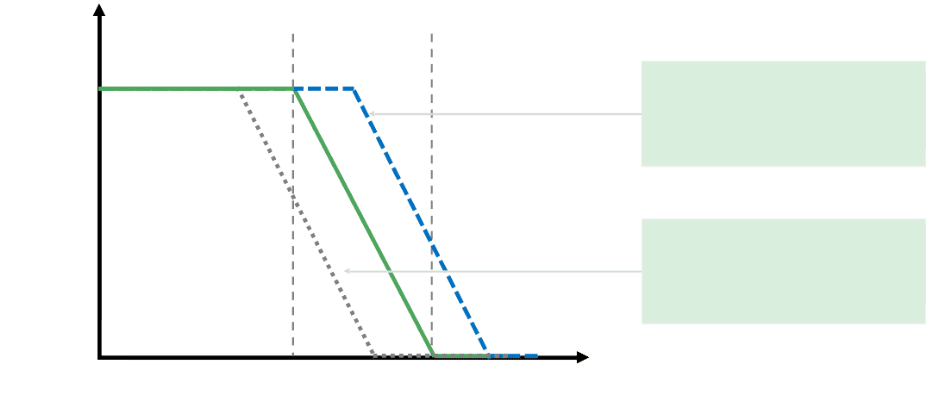
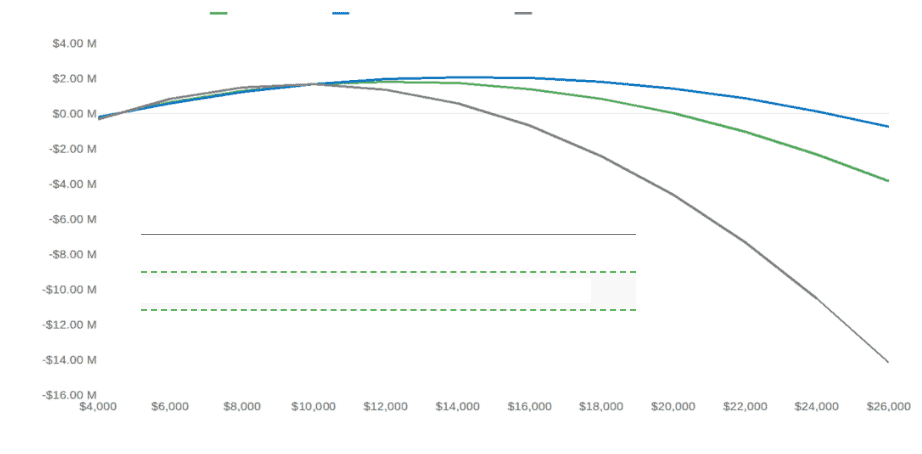
Profitability
5. Connect with Your Customer and Showcase Your Value
Once your value is quantified, the next essential step in the RFP bidding process is to consolidate your proposition into an easily digestible story that your team can deliver to the customer. The pitch decks winning RFPs are short, can be presented in less than 30 minutes, and leave customers with the 3 or 4 competitive differentiators that make your bid the ideal choice.
It is becoming more difficult to secure presentation time with customers during the RFP process since the advent of online bids and professional procurement entities trying to commoditize offers. Regardless of the barriers in the way, however, presenting to the customer is crucial unless you’re willing to compete purely based on price to differentiate your offer.
Numerous clients that we have dealt with have instituted a policy of declining bids if they cannot meet with the potential customer to discuss why they are the right solution.
Final Thoughts
The RFP process has never been more important or more difficult to navigate. B2B businesses rely on successful bids to generate significant portions of their sales, but new technologies, commodified procurement processes, and online bidding systems have forced vendors to slash costs down to the bone. Many have grown discouraged by the seeming impossibility of turning the RFP process to their advantage. Thankfully there are some best practices for getting more winning RFP bids at better terms.
Winning RFP bids requires a shift in thinking and approach. It starts by gaining a deep understanding of your customer’s needs, a firm calculation and justification for the value you bring to the table, gaining insights from historical bid data, showcasing your value to the customer, and using an automated bidding tool to identify opportunities, plus using the services of experts in mix management pricing strategies to maximize your revenue.
Don’t give in to the pressure to compete exclusively on price. That way lies madness. Give yourself a moment to take stock of your approach, follow the steps in this guide, and let Revenue Management Labs take your RFP bidding into the 21st century. Contact RML today for the strategies, insights, and expertise you need to win more bids on your terms.
ABOUT THE AUTHOR
Avy Punwasee is a Partner at Revenue Management Labs. Revenue Management Labs help companies develop and execute practical solutions to maximize long-term revenue and profitability. Connect with Avy at apunwasee@revenueml.com
